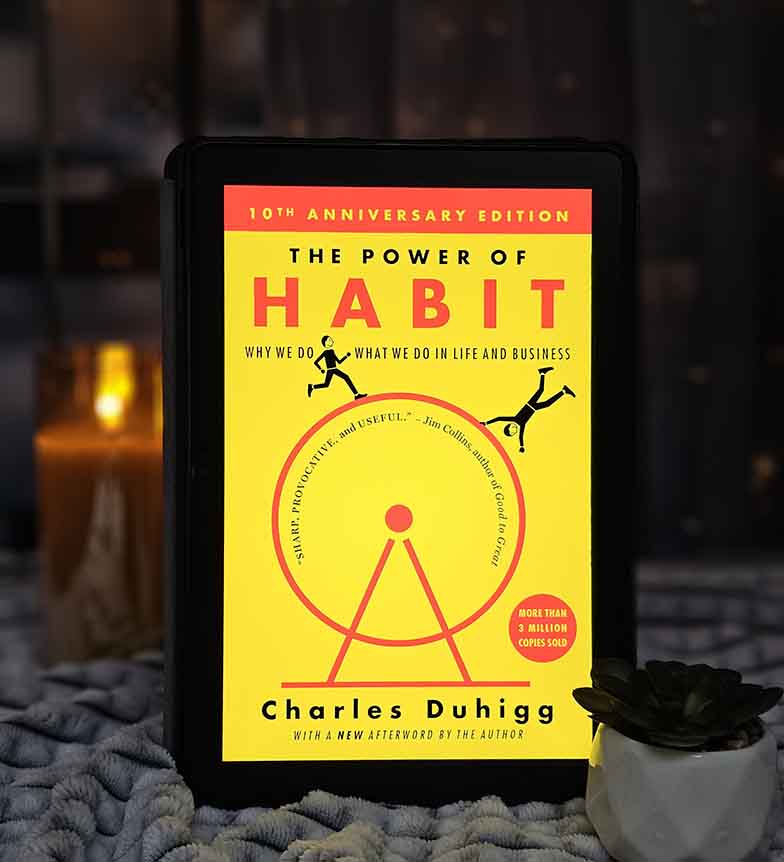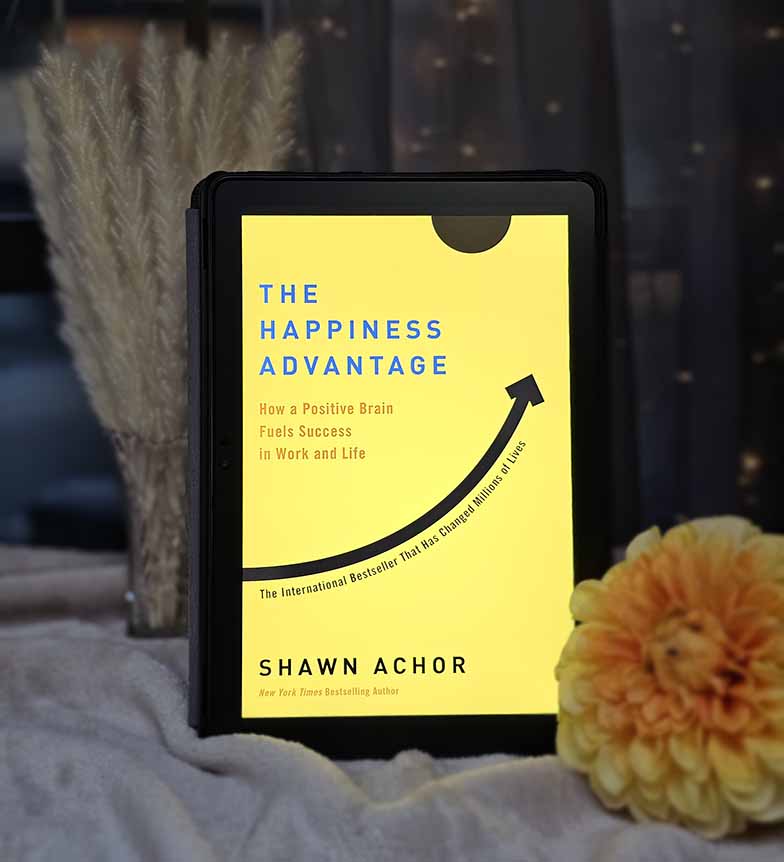
The Power of Habit
by Charles Duhigg
An exploration of the science behind habit formation and change, examining how habits work in individual lives, organizations, and societies. Duhigg combines neuroscience research with compelling case studies.
Spoiler Warning
This review may contain spoilers. Read at your own discretion if you haven't finished the book yet.
The Science of Behavioral Change: Understanding the Mechanics of Human Automation
The Power of Habit represents Charles Duhigg's ambitious attempt to synthesize neuroscience research, behavioral psychology, and real-world case studies into a practical framework for understanding and changing human behavior. As a Pulitzer Prize-winning journalist, Duhigg brings investigative rigor to the complex world of habit formation, creating a work that functions simultaneously as scientific explanation, self-help guide, and business strategy manual. While the book succeeds in making complex research accessible, its broad scope sometimes comes at the cost of depth and nuance.
The Scientific Foundation
Neurological Basis of Habits
Duhigg's exploration of the basal ganglia and its role in habit formation provides solid scientific grounding for his behavioral recommendations. His explanation of how the brain converts conscious decisions into automatic routines helps readers understand why habits feel so difficult to change and why willpower alone rarely succeeds in creating lasting behavioral change.
The research on neuroplasticity and habit formation offers hope for change while explaining why the process requires patience and strategic thinking rather than mere determination.
The Habit Loop Framework
The book's central contribution is its simple but powerful framework: cue, routine, reward. This three-step model provides practical structure for analyzing existing habits and designing new ones, making abstract neuroscience research applicable to daily life.
However, the simplicity that makes the model accessible also limits its ability to address complex behaviors that don't fit neatly into this pattern.
Individual Habit Change Strategies
The Golden Rule Implementation
Duhigg's "Golden Rule of Habit Change"—keep the same cue and reward while changing the routine—provides actionable guidance for personal behavior modification. His examples demonstrate how this principle works across various contexts, from exercise routines to stress management.
The approach feels more sustainable than willpower-based methods because it works with existing neural pathways rather than trying to eliminate them completely.
Keystone Habits Identification
The concept of keystone habits—behaviors that trigger positive changes in other areas of life—offers strategic approach to personal development. Duhigg's examples of exercise, meal planning, and meditation as keystone habits provide concrete starting points for readers seeking comprehensive life changes.
However, the book could benefit from more guidance on how individuals can identify their own potential keystone habits rather than assuming universal patterns.
Organizational Habit Analysis
Corporate Culture and Routine
The business-focused sections explore how organizational habits—both productive and destructive—develop and persist within companies. Duhigg's case studies of companies like Alcoa and Starbucks demonstrate how changing organizational routines can transform entire corporate cultures.
These examples provide valuable insights for managers and leaders, though the focus on large corporations may limit relevance for readers in smaller organizations or different professional contexts.
Crisis as Change Catalyst
The book's exploration of how crises create opportunities for habit change offers insight into organizational transformation. The examples show how smart leaders can use periods of uncertainty to implement changes that would be impossible during stable times.
This analysis provides useful framework for understanding organizational change management, though it could explore the ethical implications of using crises to implement potentially unpopular changes.
Social Movement and Community Habits
Collective Behavior Patterns
Duhigg's examination of social movements through the lens of habit formation provides interesting perspective on how collective action emerges and sustains itself. The analysis of the Montgomery Bus Boycott and other movements shows how individual habits can scale to create social change.
However, the habit framework may oversimplify complex social phenomena that involve ideology, power structures, and historical context beyond behavioral patterns.
Community and Belief Systems
The book's discussion of how communities reinforce habit change highlights the social nature of sustainable behavioral modification. The examples of AA and other support groups demonstrate how group involvement can provide the belief and accountability necessary for lasting change.
This insight about the social nature of habit change is valuable but could be developed more thoroughly with additional research on community psychology and social support systems.
Strengths of the Approach
Accessible Science Communication
Duhigg excels at translating complex neuroscience and psychology research into language accessible to general audiences. His journalistic background serves him well in making academic concepts feel relevant and actionable.
Compelling Case Studies
The book's case studies—from Tony Dungy's coaching methods to the London Underground bombing response—provide memorable examples that illustrate abstract concepts concretely.
Practical Application Framework
The habit loop model gives readers a simple tool for analyzing and changing their own behaviors, moving beyond theoretical understanding to practical application.
Interdisciplinary Integration
The book successfully integrates insights from neuroscience, psychology, sociology, and business management to create a comprehensive view of habit formation and change.
Limitations and Areas for Improvement
Oversimplification of Complex Behaviors
The habit loop framework, while useful, may oversimplify behaviors influenced by emotions, social context, or external circumstances beyond individual control.
Limited Discussion of Individual Differences
The book assumes relatively universal patterns of habit formation without adequately addressing how personality, mental health, socioeconomic factors, or cultural background might influence habit development and change.
Insufficient Attention to Structural Factors
While focusing on individual and organizational change, the book gives limited attention to environmental and structural factors that may support or undermine habit formation efforts.
Research Limitations
Some of the neuroscience research cited is relatively preliminary, and the book could benefit from more cautious discussion of the limitations and ongoing debates in habit research.
Contemporary Relevance
Digital Age Habit Formation
While published before the full impact of social media and smartphone technology, the book's principles apply to understanding digital habits and technology addiction, though specific guidance for these contexts would be valuable.
Workplace Productivity Culture
The book's focus on productivity and efficiency aligns with contemporary workplace culture but could benefit from more discussion of work-life balance and the potential downsides of habit optimization.
Health and Wellness Applications
The habit formation principles apply well to contemporary health and wellness challenges, from exercise routines to dietary changes, though the book could address the complexity of habits related to mental health and chronic conditions.
Target Audience Assessment
Self-Help Seekers
Readers looking for practical behavior change strategies will find useful tools, though they may need to adapt the general principles to their specific circumstances and goals.
Business Leaders
Managers and executives will appreciate the organizational focus and case studies, though smaller organizations may need to scale the examples to their contexts.
Psychology and Behavior Enthusiasts
Those interested in behavioral science will enjoy the research summaries and interdisciplinary approach, though they may want more detailed discussion of ongoing debates and limitations.
Comparison to Similar Works
Versus Other Habit Books
Compared to more recent works like James Clear's "Atomic Habits," Duhigg's book provides more scientific background and organizational focus but less detailed guidance on implementation strategies.
Behavioral Economics Integration
The book complements works in behavioral economics but could benefit from more integration with insights about cognitive biases and decision-making heuristics.
Implementation Challenges
Individual Application
Readers may struggle to apply the general principles to their specific situations without more detailed guidance on troubleshooting common obstacles and adapting strategies to different contexts.
Measurement and Tracking
The book provides limited guidance on how to measure habit formation progress or adjust strategies when initial approaches don't work.
Long-term Sustainability
While discussing the importance of belief and community, the book could provide more concrete strategies for maintaining motivation and dealing with setbacks over extended periods.
Final Assessment
The Power of Habit succeeds as an introduction to the science of behavior change and provides a useful framework for thinking about habit formation at individual, organizational, and social levels. Duhigg's strength lies in making complex research accessible and providing memorable examples that illustrate key concepts.
However, the book's broad scope comes at the cost of depth in specific areas, and readers seeking detailed implementation guidance may need to supplement this overview with more specialized resources. The habit loop framework, while valuable, may oversimplify complex behaviors and doesn't adequately address individual differences or structural factors that influence behavior change.
The work is most valuable as a starting point for understanding behavioral change rather than a comprehensive guide to implementation. For readers seeking to understand the general principles behind habit formation and change, Duhigg provides solid foundation that can be built upon with additional research and practical experimentation.
Rating: 3.0/5 ⭐
Perfect for: Readers new to behavioral science, business leaders interested in organizational change, anyone seeking a general framework for understanding habits
Consider carefully if: You need detailed implementation strategies, prefer more nuanced discussion of complex behaviors, or want cutting-edge research rather than accessible overview
My Notes & Takeaways
The Habit Loop and Key Concepts
The Basic Habit Loop: "First, there is a cue, a trigger that tells your brain to go into automatic mode and which habit to use. Then there is the routine, which can be physical or mental or emotional. Finally, there is a reward, which helps your brain figure out if this particular loop is worth remembering for the future."
The Golden Rule of Habit Change: "You can't extinguish a bad habit, you can only change it. How it works: Use the same cue. Provide the same reward. Change the routine."
Keystone Habits: "Some habits matter more than others in remaking businesses and lives. These are 'keystone habits,' and they can influence how people work, eat, play, live, spend, and communicate."
The Power of Belief: "For habits to permanently change, people must believe that change is feasible. Most often, that belief only emerges with the help of a group."
You Might Also Like

The Happiness Advantage
by Shawn Achor
Based on research in positive psychology, this book reveals how happiness fuels success, not the other way around. Shawn Achor provides seven principles to rewire your brain for greater happiness, resilience, and productivity.

Everything is Figureoutable
by Marie Forleo
A revolutionary mindset and practical action plan for when you feel stuck, overwhelmed, or lost. Marie Forleo shares her philosophy that any problem, challenge, or dream is figureoutable.

The Underdog Advantage
by Dean Graziosi
Dean Graziosi argues that being an underdog is actually an advantage in achieving success, providing strategies for leveraging disadvantages and turning obstacles into opportunities.